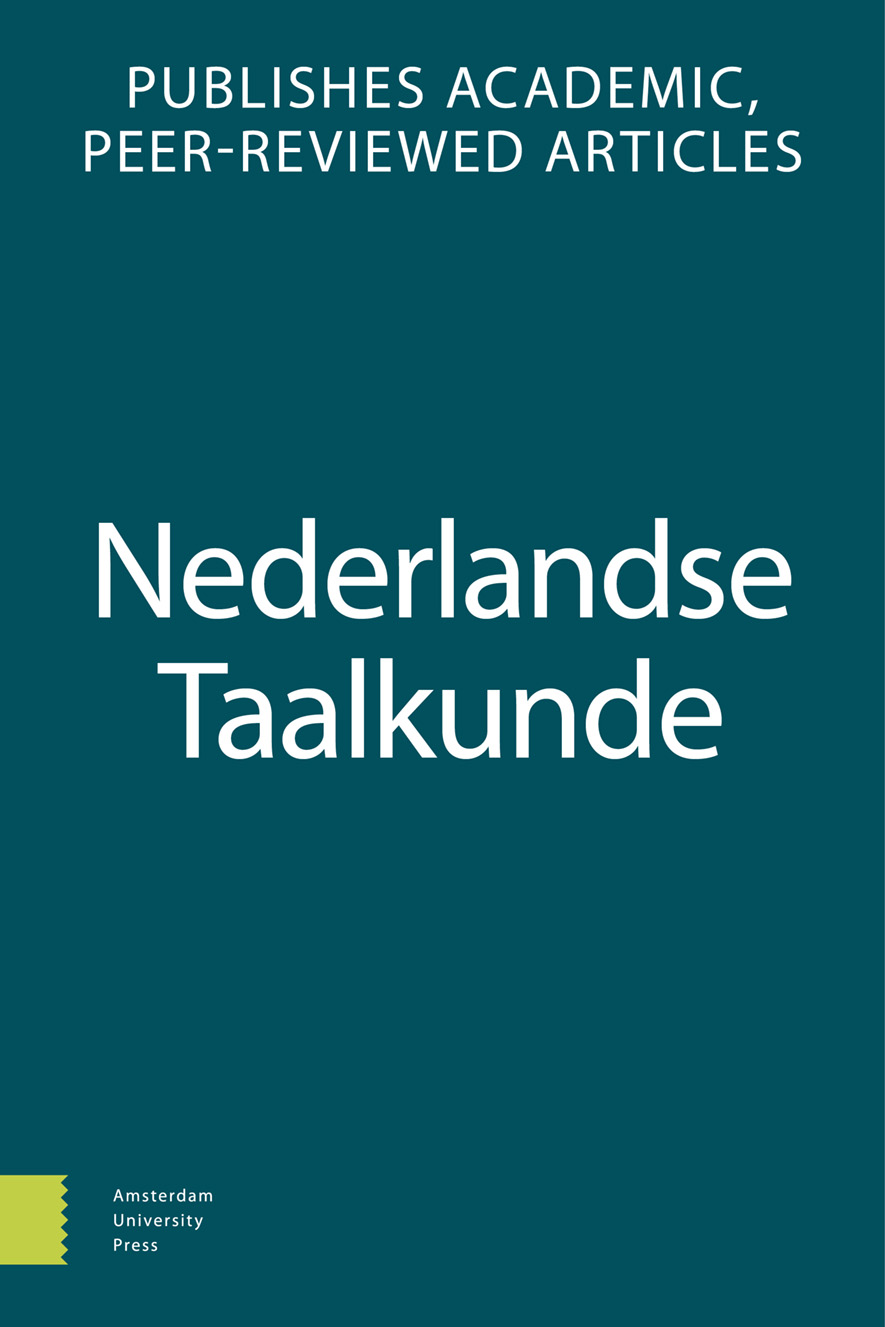- Home
- A-Z Publications
- Nederlandse Taalkunde
- Previous Issues
- Volume 22, Issue 3, 2017
Nederlandse Taalkunde - Volume 22, Issue 3, 2017
Volume 22, Issue 3, 2017
Language:
English
-
-
oa De indeling van de dialecten in Noord-Limburg en het aangrenzende Duitse gebied
More LessAuthors: Frens Bakker & Roeland van HoutAbstract Mapping dialects in North-Limburg and the adjacent German region. How relevant is the Uerdinger line as dividing line? The Uerdingen isogloss is claimed to define the border between the Kleverlandish and South Lower Franconian dialect areas, both in the Netherlands and Germany. In earlier research we concluded that the border between these two dialect areas had to be reduced to other isoglosses. In thi Read More
-
-
-
oa Semi-insubordinate dat-constructions in Dutch
More LessAbstract This paper discusses one subtype of semi-insubordination in Dutch, viz. adverbial and adjectival semi-insubordinate dat-constructions (e.g. Misschien/Leuk dat hij komt ‘Maybe/nice that he comes’). These constructions display an unusual syntactic status in that they consist of a (formally) subordinate dat-clause which is preceded by just one adverb or adjective, instead of a full matrix clause. In this study, I will outline the s Read More
-
-
-
oa Internal constraints on the use of gaan versus zullen as future markers in spoken Dutch
More LessAbstract This paper provides a quantitative variationist analysis of the future markers gaan and zullen in modern spoken Dutch in the light of current discussion on grammaticalisation. In order to determine to what extent gaan has been grammaticalised, internal constraints on the distribution of gaan and zullen such as verb type, animacy of subject, grammatical person, clause type, sentence type and proximity of f Read More
-
-
-
oa Language-specific tendencies towards morphological or syntactic constructions
More LessAuthors: Isa Hendrikx, Kristel Van Goethem, Fanny Meunier & Philippe HiligsmannAbstract In this study, we present a corpus-based comparison of the use of intensifying constructions in written L1 Dutch (Corpus Hedendaags Nederlands) and written L1 French (Frantext). We subsequently discuss intensification in Dutch as a second language (L2 Dutch) by French-speaking learners (Leerdercorpus Nederlands). The analysis adopts a constructional perspective (Goldberg 2006, Tomasello 2003) and aims to co Read More
-
-
-
oa Stance-taking through sibilant palatalisation in Gouda Moroccan Dutch
More LessAbstract The topic of this article is sibilant palatalisation in the speech of Moroccan-Dutch youth from Gouda, a small city in the Netherlands. In the first part of the article, sibilant palatalisation is described as a variable feature of Moroccan-Dutch speech, which mainly occurs in restricted phonetic and lexical contexts. In the second part some of the data will be explored more closely through the lens of stance-taking. By ad Read More
-
Most Read This Month
Article
content/journals/13845845
Journal
10
5
false
en

Most Cited Most Cited RSS feed
-
-
oa Goed of fout
Authors: Hans Bennis & Frans Hinskens
-
- More Less

